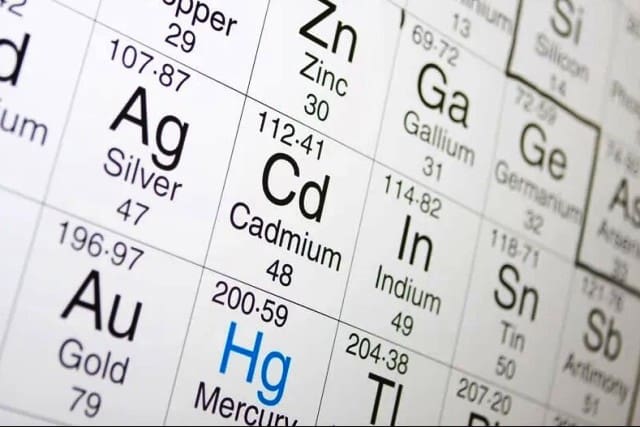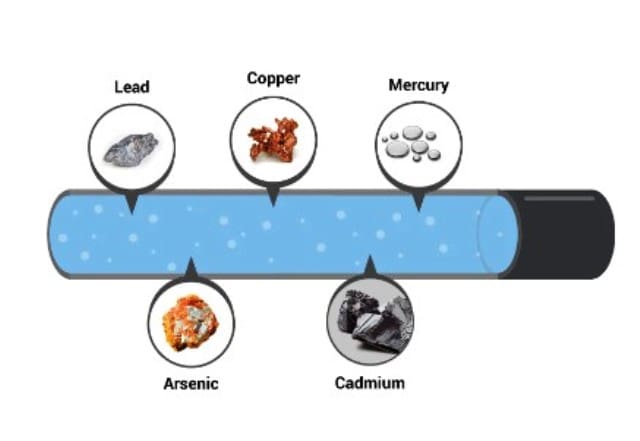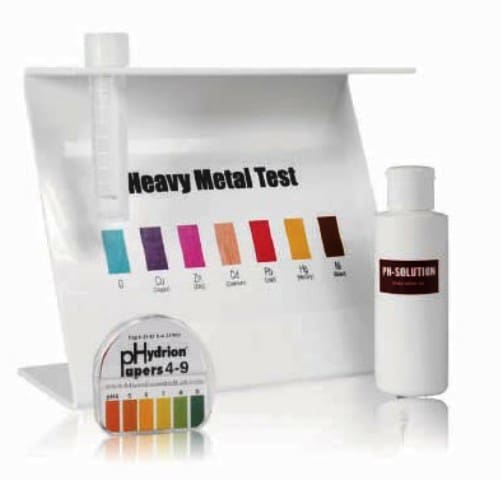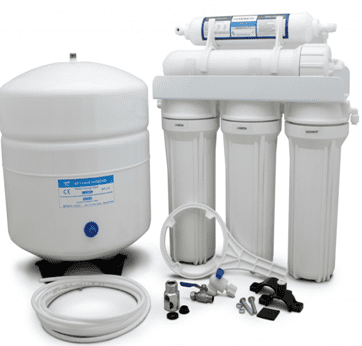
Exploring the Impacts of Heavy Metals on Water
Heavy metals in water are a silent threat that should not be overlooked. Heavy metals are typically found in the environment and can be hazardous to human health if ingested or inhaled. While heavy metals are naturally occurring, they can also be released into the environment through industrial and other human activities.
Heavy metals can enter our water supplies through various sources, including agricultural runoff, industrial waste, and mining operations. Once these metals enter our water, they can be difficult to remove and harmful to humans and wildlife. Heavy metals can cause various health problems, including kidney and liver damage, neurological disorders, and cancer. Heavy metals can accumulate in aquatic organisms and be passed up the food chain, potentially impacting human health.
Due to the potential health risks associated with heavy metal contamination, it is important to be aware of the presence of these metals in our water supplies. Testing for heavy metals should be conducted regularly to ensure the water is safe to drink. Additionally, steps should be taken to reduce heavy metal contamination, such as proper disposal of industrial waste and agricultural runoff.
The presence of heavy metals in our water supplies is a silent threat that should not be overlooked. It is important to be aware of the potential health risks associated with heavy metal contamination and take steps to reduce or eliminate them. Testing for heavy metals should be conducted regularly, and steps should be taken to reduce contamination from sources such as industrial activities and agricultural runoff.

What are the sources of heavy metals in drinking water?
There are many sources of heavy metals in drinking water. Some of these metals can come from natural sources, such as rocks and minerals in the earth’s crust. Others come from human activities, such as mining, manufacturing, agriculture, improper waste disposal, and burning fossil fuels.
Heavy metals can enter the water through different pathways. They can be dissolved in water, or they can be attached to particles of soil or sediment. Once in the water, heavy metals can stay there for a long time. They can also move through the environment and end up in different places, such as in our food or air.
Exposure to heavy metals can be harmful to our health. Some heavy metals can damage our kidneys, liver, and other organs. They can also cause problems with our nervous system and our development. Children and fetuses are especially vulnerable to the effects of heavy metals.
There are many ways to reduce our exposure to heavy metals. We can treat our water to remove them. We can also be careful about the products we use and the food we eat. And we can limit our exposure to areas where heavy metals are found.
Here is a list of the heavy metals in water?
The list of heavy metals commonly found in water includes:
Arsenic
Cadmium
Chromium
Lead
Mercury
Selenium
Arsenic: Arsenic is a naturally occurring environmental element that can also be released from industrial and agricultural activities.
Arsenic is a naturally occurring heavy metal found in water. It is a carcinogen, meaning it can cause cancer in humans. It can also cause skin, lung, and bladder cancer. Arsenic can also lead to cardiovascular and neurological problems.
Cadmium: Cadmium is a metal used in batteries and can be released from industrial activities.
Cadmium is a toxic heavy metal found in water. It can cause kidney and liver damage and an increased risk of cancer. Cadmium can also affect the nervous system, causing headaches and fatigue.
Chromium: Chromium is a metal used in industrial processes and can be released into water from industrial and agricultural activities.
Lead: Lead is a metal used in plumbing and can be released from industrial and agricultural activities.
Lead is one of the most common heavy metals found in water. It is a neurotoxin and can cause learning disabilities, behavioral problems, and anemia in children and adults. Lead can also have adverse effects on the kidneys and cardiovascular system.
Mercury: Mercury is a naturally occurring environmental element that can be released from industrial activities.
Selenium: Selenium is a metal used in industrial processes that can be released into water from industrial and agricultural activities.
Heavy metals can have serious health risks when consumed in high concentrations, and it is important to ensure the safety of drinking water by testing for the presence of these metals. Testing for heavy metals in water can help identify potential contamination sources and ensure water is safe for human consumption.

Effects of the heavy metals on human health
Heavy metals are naturally occurring elements in rocks, soil, and water. They are found in small amounts in the environment and can cause human health problems if they accumulate in large quantities. Lead, cadmium, arsenic, and mercury are the most common heavy metals.
Heavy metals can be found in water sources due to industrial pollution, agricultural runoff, and natural sources. When these metals enter the water supply, they can accumulate in the body and cause health problems. Long-term exposure to heavy metals can lead to neurological, reproductive, and immune system disorders.
Mercury is a neurotoxin and can damage the brain, kidneys, and immune system. It can also cause congenital disabilities and developmental delays in children.
Heavy metals in water can have serious health effects on humans. It is important to reduce exposure to these metals by avoiding contaminated water sources, properly disposing of hazardous materials, and using water filters to reduce the amount of heavy metals in drinking water.
Some effects of exposure to heavy metals in water include nervous system damage, cancer development problems, and cancer. Older adults, children, and pregnant women are most vulnerable to the effects of heavy metals in the water.
Heavy metals in water can also affect drinking water quality, as some heavy metals can impart a metallic taste or odor to the water. Some heavy metals can react with other substances in the water, toxic compounds toxic to humans and other organisms.

Testing for Heavy Metals in Water
Testing for heavy metals in water is the best way to protect human health and the environment. By identifying sources of contamination and monitoring levels of metals in water, we can take steps to reduce exposure and protect our health and our planet.
You can get your drinking water tested for heavy metals in a water testing lab or do a preliminary investigation using a home testing kit. Lab tests are generally more accurate and can detect even minute traces of heavy metals in water.
On the other hand, home water testing kits are more convenient and affordable, but the results may not be as accurate as lab tests. However, both options are great for better understanding your drinking water’s safety water.

Removing heavy metals from water
Reverse osmosis and distillation are two effective methods for removing heavy metals from water. Heavy metals can come from various sources, including industrial waste, mining operations, and even natural environmental deposits. These metals are harmful to human health if consumed at high levels, so removing them from the water before drinking them is important.
Reverse osmosis works by forcing water through a semipermeable membrane. This membrane only allows water molecules to pass through, rejecting larger molecules like heavy metals. The water is then collected on the other side of the membrane, leaving the heavy metals behind.
Distillation works by heating water until it turns into vapor. The vapor is then collected and condensed back into the water, leaving behind any impurities, including heavy metals. This process can be repeated multiple times to purify the water further.
Both reverse osmosis and distillation are effective methods for removing heavy metals from water. They can be used alone or in combination to provide safe, clean drinking water. Reverse osmosis is the most convenient, effective, and affordable choice for homes and offices.

Conclusion
Heavy metals in water can seriously threaten your health, but you can take steps to protect yourself and your family. Testing your water for heavy metals is an important first step. Reverse osmosis is a common and effective method to remove heavy metals from your drinking water. By being aware of the risks of heavy metals in water and taking action to remove them, you can protect your health and well-being.
Frequently asked questions
What is the most common heavy metal found in water?
Arsenic is the most common heavy metal found in water in Canada. However, it is estimated that more than 50 million people in India are exposed to unsafe levels of arsenic in their drinking water. This means there is plenty of room for improvement, and by working together, we can ensure everyone has access to clean water.
Which metal is toxic in drinking water?
Some heavy metals can be harmful in drinking water, but lead is the most toxic. Lead can cause developmental delays, lower IQ, and behavioral problems in children and pregnant women. Lead is commonly found in older pipes and plumbing fixtures and can leach into drinking water over time. Arsenic and Mercury are also highly toxic and dangerous.
How can you know if your water contains heavy metals?
There are several ways to determine if your water has heavy metals.
Water testing: You can have your water tested by a certified water testing lab to determine the presence and concentration of heavy metals. Alternatively, you can use a water testing kit to test your water at home.
Geographical location: Some areas have higher levels of heavy metals in their water than others. Areas with a history of mining or industrial activity, for example, may have higher levels of heavy metals in their water. Agricultural areas known for misuse of fertilizers and pesticides are also known for high levels of heavy metals in groundwater.
If you think your drinking water may have heavy metals, get it tested in a lab and install a reverse osmosis system.
What are the top five heavy metals in water?
The top 5 heavy metals found in water that are of concern to human health are:
Lead
Arsenic
Mercury
Cadmium
Chromium
